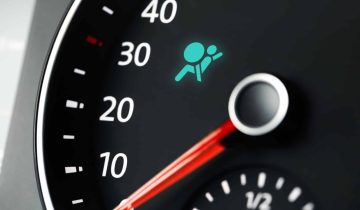Do you often forget to wear your seat belt as soon as you get in the car? Or are you one of the many people who try to avoid wearing it as much as possible because it feels restrictive? If you’re any of the two, read on.
Seat belts are proven to save a life in a car accident. According to the National Highway Traffic Safety Administration (NHTSA), over 15,000 lives are saved every year in the US because of seat belts.
A Five-Way Protection
There are five ways a seat belt keeps vehicle occupants safe from serious injuries. The first way is that a seat belt can keep the vehicle occupants safe inside the vehicle. There’s a common misconception that being thrown from a vehicle in the event of a crash is better. The truth is, a person thrown from a vehicle is four times more likely to be killed than those who remain inside the car.
The next one is that seat belts restrain the strongest parts of the body. They are designed to have contact with the strongest parts of the body, which are the hips and shoulders. These body parts are where the seat belt is strapped.
Third, it spreads the force from the collision. Lap and shoulder belts spread the force of the crash on a wide area of the body as they put less stress on any one area. This way, they can help vehicle occupants avoid serious injury.
Seat belts can also help the body slow down. What causes an injury in a car crash is a quick change in speed. Seat belts can help extend the time it takes for you to slow down in a crash.
Finally, seat belts can help protect your brain and spinal cord, which are critical areas of the body. Head injuries are deadly, yet it’s one of the most difficult injuries to see immediately, while spinal cord injuries can have serious consequences.
Wear Your Seat Belt Properly
Getting the right fit of the seat belt is important. Make sure the strap that goes across the lap fits snugly over the hips and upper thigh area, while the part on the shoulder must rest securely across the chest and shoulders between the breasts. Make sure not to let the seat belt strap fall across the neck or face, and never place it under your arms or behind your back.
Seat Belt for Infants and Kids
Children require specialized protection inside a vehicle because they have a different skeletal structure. Their age, height, and weight will determine the safest way for them to travel. Children under age one who weigh less than 20 pounds must sit rear-facing.
On the other hand, children older than one who weighs more than 20 pounds must ride forward-facing. Children age four and older who weigh more than 40 pounds must be in booster seats.
When kids outgrow their booster seats, they can use seat belts at the back of the vehicle.
Have a Safe Ride!
Seat belts are there because they are important. So, make sure you always wear your seat belt before you drive away. It could help save lives.
Do you need help with quality seat belt repair in Westfield, MA? Safety Restore offers reliable seat belt and airbag module services. Contact us today.
